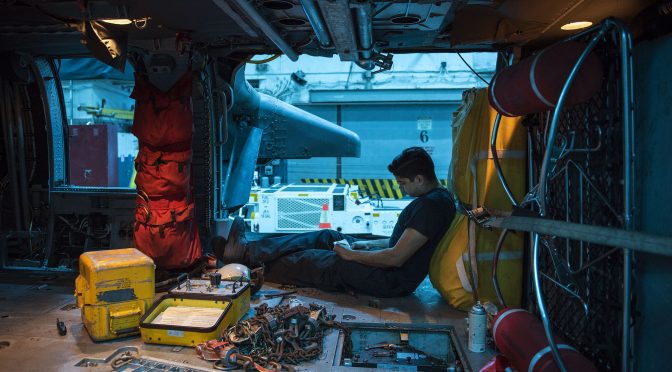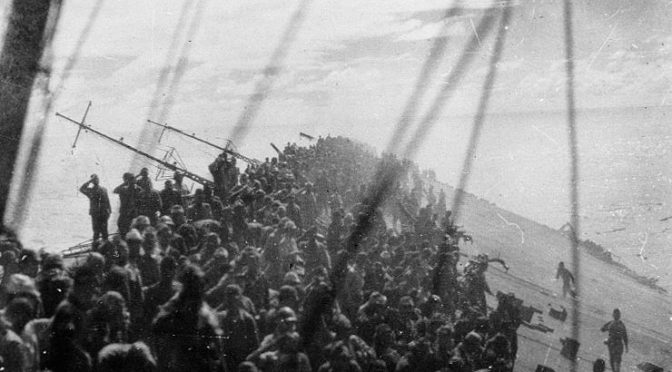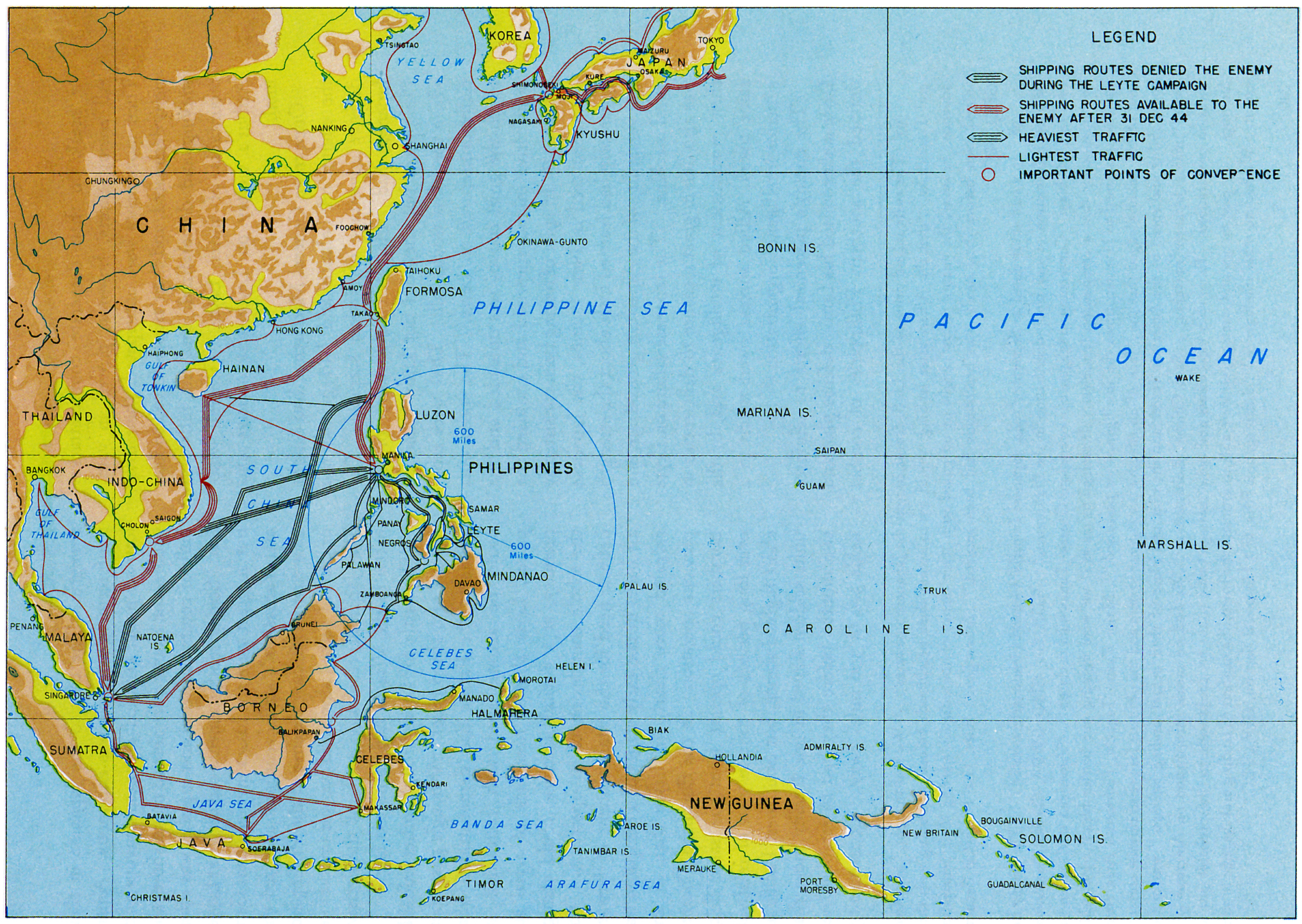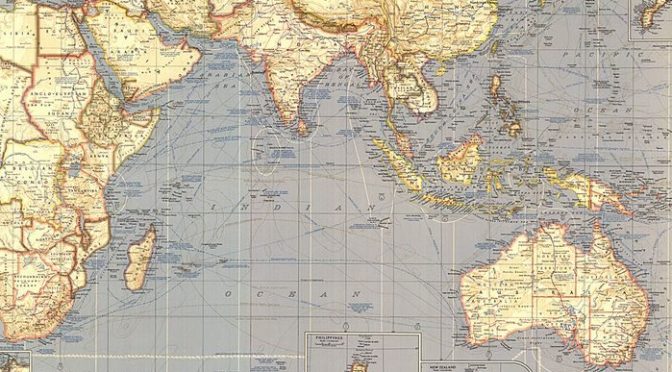The following was submitted in response to CIMSEC’s Call for Articles on restoring warfighting readiness.
By Tom Bayley, CAPT (Ret.) USN
The Strategic Readiness Review provides a good start for institutional reflection and debate as the U.S. Navy moves forward in addressing warfighting readiness. However, trying to address the complex “system of systems” contributing to readiness in 80 pages is a daunting task. Further examination is required to ensure the institution is doing more than identifying symptoms and contributing factors to a complex situation. Candid discussion and debate is needed in an effort to identify root causes and systemic issues to ensure the Navy learns from this introspective study.
Leadership
The last paragraph of the Executive Summary to this report claims “leadership is the most important element to this journey” to restore readiness. Although not specifically calling out Navy senior leadership as an underlying cause, the issue of “institutional accountability” alludes to the royal “we” of how senior leaders could have (and should have) done better. The 2012 message by ADM John Harvey to the Surface Community just prior to his retirement should have been a red flare, invoking the royal “we” nearly 80 times in his candid reflection. He warned the community was straying from standards in excellence and opined they had lost focus on effectiveness over emphasis on efficiency.
A thorough debate of the SRR’s findings is warranted, asking the “why?” question several times to get to the root causes. As an example, the Executive Summary states “Many of these deficiencies have been observed and authoritatively documented for years, however the naval capacity that had been built up for the Cold War masked their impact” (p. 1). Why were these deficiencies masked if they were observed and documented? Why was no action taken on these? Several times the report references the culture of the Navy, both where it had strayed and recommending where it needed to go. This begins to get to the real underlying causes of how good intentions and senior decisions over time were in adequate in shaping the complex system of systems of warfighting readiness.
The need to develop and grow the Navy’s leaders for the future is a warfighting imperative. Being able to view all the facets of readiness, including multiple perspectives is essential. Developing the proper temporal perspective where short-term goals can have long-term impacts which run counter to the mission and the ability to resolve these differences is essential. Being able to seek out possible unintended consequences and mitigate (or even avoid) them is critical. Seeking out opportunities for success from challenges being presented is part of the recommended “learning culture.”
As the Navy Leader Development Framework states, leadership involves competency and character. Clearly there were competency issues involved in understanding this system of systems concept toward readiness. But the issue of character is equally important where leaders must have the character to stand up and be heard, even when the news may not be good. Being able to “lead up” (whether through the operational or administrative chain of command) is required. Also being able to effectively “lead out” is required for senior leaders, such as educating and conveying to Congress the convincing argument in an environment of competing resources (including money AND time). The Navy’s leaders and their staffs must develop the cognitive capacity to handle these complex problems with the appropriate strength in character to ensure success in warfighting.
Organizational Considerations
In reading this report, one might conclude a hint of victimization by the Navy where the Goldwater-Nichols Act (GNA) and Defense Officer Personnel Management Act (DOPMA) hindered the Navy’s ability to execute its responsibilities of train, maintain, and equip naval forces. This points to the challenge where the Navy failed to thoroughly grasp the context of this legislation. The Navy’s culture to react (vice being proactive), combined with a degree of over self-confidence in excellence took the Navy down a path it might have otherwise embarked. Although a review of these dated requirements might be warranted, so should an effort of working within these guidelines be considered.
Coming from the Cold War Era, where the Navy enjoyed a great deal of independence with its “Blue Water Navy” focus to offset the Soviet threat, the Navy resisted the move toward “jointness.” It relied heavily on joint waivers for Flag Officer promotions as required by DOPMA and failed to comprehend the implications of GNA upon the Navy’s organization. OPNAV’s Strategic Plans (N5) continued to focus on strategic operational planning to support force structure positions but strategic proactive thinking was lacking at Navy headquarters. It wasn’t until the Maritime Operations Center with Maritime Headquarters (MOC/MHQ) Concept came out in 2005 where the Navy finally recognized its Fleet Commanders were the operational-level naval commanders for the Combatant Commands (vice the CNO). Even today, OPNAV N5 attempts to do theater engagement priorities for countries which sometimes runs counter to the Combatant Commander’s priorities (and responsibilities). Being from a previous Fleet Commander staff, there were numerous times where the priorities of OPNAV didn’t align with the Fleet Commanders. Hence, it’s at the Fleet Commanders where the ADCON and OPCON came together and the creative tension was fostered. Every Deployment Order required two separate routing chains. One up through the associated Combatant Commander while also chopping a separate package up through Navy channels to OPNAV. It was at the Joint Staff where the two chops would converge for review and recommendations to the Secretary of Defense. Navy’s lack of understanding of the joint processes resulted in its being handicapped in this effort as it resisted the effort to make officers joint. Just like it ignored the manning requirements of Fleet Headquarters Staffs (through community management to focus on the “higher priorities” of individual communities), lacking adequate Navy representation on Joint staffs was minimizing the Navy’s perspective.
In September 2005, the National Strategy for Maritime Security (NSMS) was issued. This was a missed opportunity for the Navy to think proactively on its implications. With the typical reactive mode of solving problems, the Navy viewed this as tasking for supporting plans with stove-piped efforts of the Maritime Operational Threat Response (MOTR) Plan of October 2005 (FUOU) and the National Plan to Achieve Maritime Domain Awareness (which was updated in 2013). Much time and effort was devoted to effectively implement these supporting plans for the Navy without the benefit of deeper assessment. Being the first time of having a national strategy for maritime security, the Navy missed an opportunity to fully explore the implications of this new document and associated implications.
Having long suffered the issue of maritime force apportionment across geographic boundaries based upon littorally-focused boundaries (i.e. the Unified Command Plan), maritime boundaries in the middle of oceans have created frictions and tensions for decades. These issues are highlighted with the supply/demand issue in the SRR. However, with the NSMS, the nation was recognizing maritime security from a global threat perspective.
Reflecting on how the Department of Defense has evolved with GNA when faced with global threats (i.e. transcends sovereign boundaries), single organizations were assigned responsibilities and authorities for these threats. In the case of nuclear deterrence, U.S. Strategic Command was created. Additionally, it took on cyberspace responsibilities with U.S. Cyber Command assigned as a Subordinate Unified Combatant Command (and now with plans to transform into a separate Unified Combatant Command). When the Global War on Terrorism (GWOT) resulted following 9/11, specific responsibilities for terrorism were assigned to U.S. Special Operations Command as a Unified Combatant Command. The mere fact U.S Transportation Command as a Unified Combatant Command with global transportation responsibilities exists would support consideration of a Unified Combatant Command responsible for maritime security across the globe. This responsibility could be assigned to the U.S. Navy, putting the big “O” back into the Chief of Naval Operations duties. Much of the command and control already exists with the various fleet headquarters and the Maritime Operations Centers. This would then relieve the dual chain of command issue (OPCON/ADCON) that pulls at the Fleet and possibly better align the Service responsibilities of Title X with its operational responsibilities, including a more centralized line of accountability.
Fiscal Disconnect
Demands exceeding supply is nothing new. Managing costs is central to any organization whether it be government or business. It is true the current federal budgetary process does hinder the ability to conduct long-term planning and execution (especially with the consequences of the Budget Control Act). However, building the compelling and convincing argument for required resources from Congress has been a challenge. Mired by a degree of mistrust with stories of the $10,000 toilet seat, cost over-runs, and inability to clearly account for expenditures, the Federal Managers Financial Integrity Act (1982) mandated that agencies implement internal controls and systems to assure fiscal accountability in effective and efficient operations. The U.S. Government Accountability Office (GAO) report of 1984 highlighted concerns with the Department of Defense’s response in grouping all the Services together. Congress continued to push hard on accountability concerns with the Chief Financial Officers Act of 1990 identifying significant losses with fraud, waste, abuse, and mismanagement, requiring increased attention to fiscal accountability. The Department of Defense was singled out in the National Defense Appropriations Act of 2010 which required DoD to improve its financial accountability with the requirement to have validated financial statements no later than 30 September, 2017.
As a result of the 2010 NDAA, the Navy spent considerable time and effort the last six years in improving financial accountability. The SRR highlighted concerns voiced in the above legislation when discussing “Surface Steaming Days” (p. 59) as being an inaccurate accounting for readiness costs. Additionally the SRR calls out “the inaccuracy of the models” (p. 60) to predict maintenance requirements (relating directly to costs). The inability to accurately account for costs has hindered the ability to develop valid models to inform planning and senior level decision making. Critical thinking has been lacking to address the implications of the changes the Navy has experienced. Even the “four or five ships at home to provide one forward” rule of thumb expressed in the SRR (p. 20) has not been adjusted for the reality of delayed maintenance periods, when it may be more on the order of 6:1 required.
Clearly, the ability to accurately tell the Navy story has hindered obtaining the needed resources. However, in taking advantage of the effort to increase fiscal fidelity and accuracy mandated by law, the use of big data, and technology, there should be opportunity to revisit modeling and planning efforts within the Navy. An initiative to capture big data relating to actual operating costs should be a priority with today’s technology to see what insights it would reveal. Clearly, better models for informed decision making are warranted by the SRR’s findings and recommendations. “Big data” analytics is a growing field in the business world and the Navy should revisit its business practices accordingly.
Manning and Training
In addressing the implications of the Defense Officer Personnel Management Act (DOPMA), the SRR implied a degree of victimization of the naval officer due to the unique demands of the Navy and its mission. The SRR hints at a “relaxation of Goldwater-Nichols Act provisions, combined with a reduction in joint headquarters billets” (p. 39) as a possible solution. The SRR does a good job of highlighting the increasing demands on our personnel (especially the officers with increased scope and depth of responsibilities) and limitations in properly preparing them. The concern for “mastery” is a recurring theme in the Manning and Training section of the SRR.
Looking forward, the future continues to grow in scope and breadth of VUCA (vulnerability, uncertainty, complexity, and ambiguity). The effort to develop the well-rounded “jack of all” (and master of none) naval officer applies. Pulling back on graduate education (as hinted in the SRR) is not the solution. From Churchill’s remarks, “now that we have run out of money we have to think”, cutting back on education would be a short-sighted perspective that has long term implications of secondary effects. Developing critical thinking abilities in senior leaders is essential for future success. The ability to understand the complexity of the systems of systems, ask the hard questions, see multiple perspectives, and have the cognitive capacity to be proactive is a war-fighting imperative.
One possible solution to this was proposed by ADM (ret.) James Stavridis and CAPT (ret.) Mark Hagerott in a joint article they wrote in 2009, “The Heart of an Officer: Joint, Interagency, and International Operations and Navy Career Development.” Perhaps an idea before its time, they recognized the increasing complexity of the world and the resulting increasing demands to best prepare Naval Officers for the future. They addressed many of the concerns highlighted by the SRR. However, they proposed the idea of developing separate career paths for officers based upon their assessment of environment and future trends. Their proposal builds a strong case to allow specialization of the officer corps (Unrestricted Line) along three career paths: Joint/Interagency Operations, Technical, and General Operations. Perhaps revisiting their proposal is well warranted as the time has come out the urgency produced by the SRR.
Conclusion
Just like readiness is described by the SRR as a system of systems, so must the way forward. However, without serious reflection and discussion to reveal all the issues involved, getting to root causes, the Navy risks an incomplete way forward. This risks further unintended consequences which could run counter to the warfighting mission. To be a learning organization requires a call for candor in open dialogue. This is a leadership challenge at all levels.
A hard look in the mirror is needed, starting with Navy culture. A good methodology might be that suggested in the recent edition of the Harvard Business Review “The Leader’s Guide to Corporate Culture.” In this article, the authors provide a possible framework to assess culture (whether at the unit level or institutionally). Through this assessment process, the framework offers a means of understanding culture which can then be linked to outcomes for the organization. “Culture” is equally (if not more) complex than the issue of “Readiness.” Both relate to organizational performance which is a warfighting imperative for the Navy.
The culture of the U.S. Navy has been its greatest asset when faced with adversity and challenges yet it has also handicapped itself as the SRR contends. Living the core values “honor, courage, and commitment” demands this critical assessment and committing to the way forward. Problem-solving is one the Navy’s greatest abilities but a more proactive approach for the future is essential. Standing up the Readiness Reform and Oversight Council is a good start. Hopefully it will be more than a problem-solving effort to stovepipe solutions for managing, but rather take on a comprehensive and integrated approach that goes beyond problem-solving and into seeking opportunities for success. The way forward cannot be solved solely by management of policies, strategies, and programs. This is a leadership challenge for future success.
Tom Bayley is a former Naval Officer who retired as a Captain in 2005, with over two decades as a nuclear submariner and designated a Joint Specialty Officer (JSO). He then joined the faculty of the U.S. Naval War College (NWC) to assist in the implementation of the Maritime Operations Center (MOC) Concept across the Navy. He is currently a Professor of Practice in Leadership & Ethics and is NWC’s Chief Diversity & Inclusion Officer. The views expressed above are his own and do not reflect the official views and are not endorsed by the United States Navy, the Department of the Navy, the Department of Defense, or any other body of the United States Government.
CIMSEC is committed to keeping our content FREE FOREVER. Please consider donating to our annual campaign now so we can continue to provide free content.
Featured Image: South China Sea (Feb. 6, 2018) Aviation Structural Mechanic 3rd Class Stephano Troche, from Lajas, Puerto Rico, assigned to the “Sea Knights” of Helicopter Sea Combat Squadron (HSC) 22, verifies a tools list during routine maintenance on an MH-60S Sea Hawk in the hangar bay of the amphibious assault ship USS Bonhomme Richard (LHD 6). (U.S. Navy photo by Mass Communication Specialist 2nd Class Diana Quinlan/Released)






